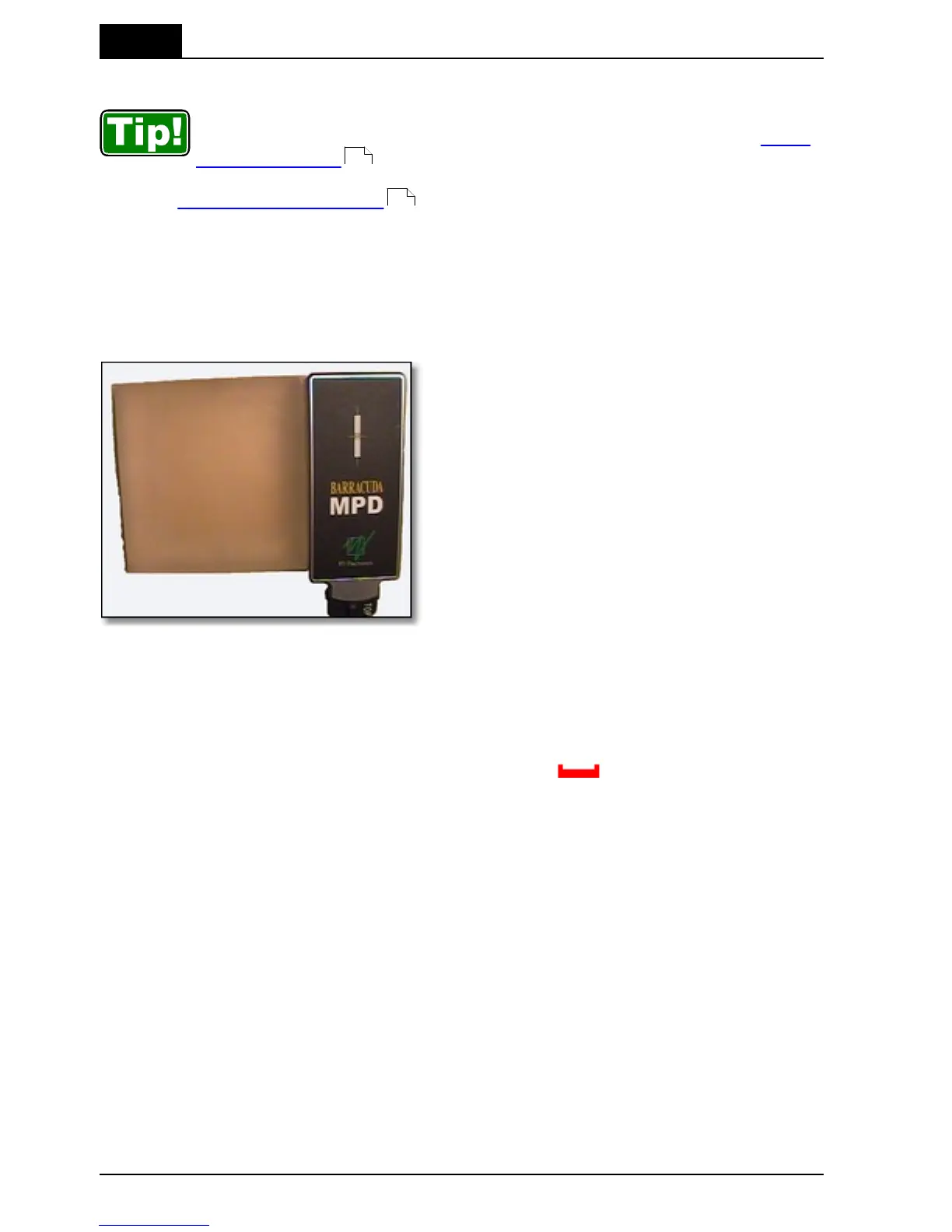See also Angular Sensitivity, MPD .
5.6.7 Average Glandular Dose, AGD (MGD)
The AGD (average glandular dose) is derived from measurements of the HVL and of
the ESAK, entrance surface kerma (or ESE) making use of tabulated conversion
factors from ESAK (or ESE) to AGD (or MGD). The tabulated data has been derived
from Monte Carlo calculations and has been verified experimentally.
Correct measurement of the Average Glandular Dose (AGD) with the MPD
In most situations you can perform measurements for a mammographic unit with the
MPD instead of a dedicated ion chamber. Since the MPD compensates for energy
dependence, the readings are in direct comparison with readings from a reference
class ion chamber. When measuring the AGD you should always have the
compression paddle in place (indicated with a red icon )
Important quantities to measure
The most common measurements for a mammographic system are conducted to
determine the average glandular dose (AGD). The AGD values are based on
measurements of ESAK (entrance surface air kerma) and HVL. To do the
measurements correctly and according to standards, the radiation detectors should be
placed directly below the compression paddle. This introduces extra scattered radiation
due to the compression paddle which is important to include when determining ESAK.
On the other hand, the HVL measurement should be done without any scatter
contribution and with good geometry.
HVL
The MPD is well collimated above its small detector area. Due to this fact it registers a
narrower angle of the X-ray field and thus much less scattered radiation compared to
an ion chamber. It has built-in good geometry and is therefore ideal for HVL
measurements. Hence, the HVL filter can be placed on top of the compression paddle
without any extra collimation even at close distance to the MPD. The Barracuda has a
built-in HVL application which should be used to get accurate HVL readings.
143
27

